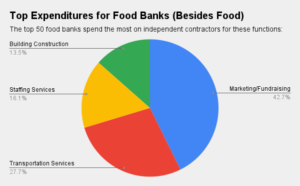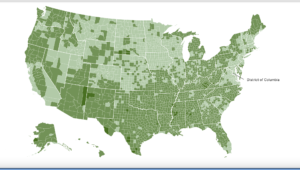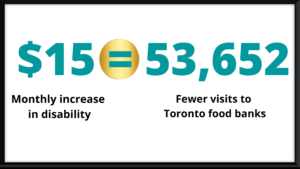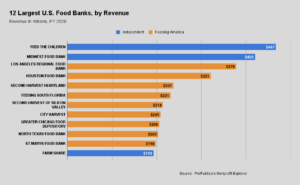A survey of food banks and pantries released earlier this month underscores the difficulty of beating hunger using current methods.
The good news is that 90% of the nearly 300 food banks and pantries surveyed said they believed hunger was solvable, according to WhyHunger, which published the survey on October 10. But this finding was dampened by the 64% of respondents who said they were unable to consistently meet the needs of their communities based on the amount of food they were able to serve. Further, 60% reported that foot traffic to their organizations has increased in the past year.
In short, the charitable food community is falling short in addressing a problem it deems solvable, according to the survey.

Given that backdrop, it’s perhaps not surprising that respondents indicated that they must do more than simply provide food to eliminate hunger. Most (68%) identified the ability to earn a living wage as having the greatest impact on ending food insecurity, pointing to a growing recognition that ending hunger requires addressing its root causes. “That’s big,” said Noreen Springstead, Executive Director at WhyHunger. “We’ve come a long way in that people are finally very clearly making the connection to economics.”
That shift in perspective opens the door to more diverse types of advocacy campaigns, Springstead said. “Advocacy has always been about protecting and defending SNAP at all costs, but we also need to work on other fronts,” she said. Additional causes worthy of attention include strengthening the earned income tax credit, which works like a wage supplement, and living-wage campaigns like the Fight for $15, she said.
The idea of advocating for better wages is a new development in the hunger landscape, Springstead said. “There’s an emerging analysis that we can’t food-bank our way out of hunger, so what are we going to do about it?” she said.
Other findings from the survey:
- 60% believe SNAP is a beneficial program, but benefits need to be increased to make a real difference
- 59% agree that most foods donated to their organizations are healthy and nutritious
- 57% say they receive limited or no funds from the government
- 54% say they often receive surplus food donations from stores and restaurants in their communities
- Most individuals who visit food pantries are individuals with limited incomes (53%), followed by employed single parents (16%) and households with parents working multiple jobs (13%)
If you’ve learned something useful to your hunger relief work today, then please donate to Food Bank News. Your donation will be doubled between now and the end of the year!








